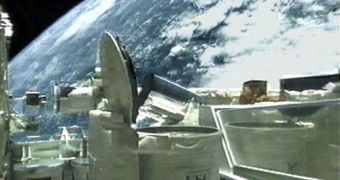Space telescopes observing the Sun have provided invaluable information on various aspects of our governing star, like its atmospheric composition and events, chemical and physical structure, evolution and ultimate fate, but they are facing a difficult problem.
They literally go blind in time from looking at the Sun too much, just like our eyes hurt from too much light. This is a very important problem that apparently can't be solved, because you can't look at the Sun without actually watching it.
A team of scientists at the University of Southern California claims to have the perfect solution: an already blind space telescope. Blind, because it's not based on optics, meaning that it has no lenses, no prisms and no mirrors of any kind.
An interesting proposal, they argue, which could solve the problems of current telescopes, which suffer sever degradation of their precision optical applications because of solar radiation. Darrell Judge and Leonid Didkovsky of the USC Space Sciences Center are the authors of these inventions.
"It can look at the sun day after day, year after year, without harm," Judge said of the new instrument, which was formally known as an optics-free spectrometer. "It could be very, very useful and important to use something like optics-free spectrometry, because you have no degradation," added Didkovsky, referring to the longer missions.
Of course, NASA was immediately interested in the proposal and offered the two researchers one of four major grants scheduled to be attributed this year for suborbital scientific research, with the purpose of building a working prototype of their blind space telescope.
It will use only ultraviolet and X-ray parts of the spectrum to analyze massive explosions known as solar flares, known for producing most of the energy in that range, which could greatly increase during solar flares, unlike visible light that remains mostly constant.
This new spectrometer is actually a squat cylinder, 3 by 3.5 inches across (7.2X8.4 cm), containing neon gas, which interacts with solar photons to produce electrons that are focused into a narrow stream by a specially designed electric field, to guide them to a detector at the back of the cylinder.
Variations in the strength of the electric field allows researchers to collect and count electrons in a range of energies and then work their way backwards to analyze the differences in the ultraviolet spectrum.

 14 DAY TRIAL //
14 DAY TRIAL //